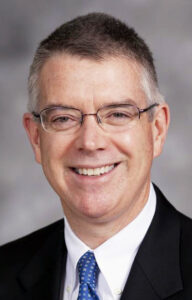By Dr. Tim Millea
The first sex reassignment surgery clinic in the United States started very quietly. Several physicians and psychologists set out to answer two questions: Could such surgeries be successfully performed? And, if so, would surgery improve their patients’ quality of life? Soon after opening, the clinic was overwhelmed with inquiries and requests for evaluation and treatment. Two facts may be surprising. This clinic was not a renegade group of mad scientists but a bastion of medical excellence, Johns Hopkins Hospital. Also, this did not occur in our age of super-specialty medicine. The year was 1966.

Over the decades since, the Hopkins clinic has had a rocky voyage. Dr. Paul McHugh, chief of psychiatry, oversaw the clinic from 1975 until 2001. After a 1979 review of their outcomes with “gender reassignment” surgery revealed “no objective advantage in terms of social rehabilitation,” McHugh and the hospital put a halt to these operations. In a reflection on that decision in 2004, McHugh wrote that the clinic “…wasted scientific and technical resources and damaged our professional credibility by collaborating with madness rather than trying to study, cure, and ultimately prevent it.” However, nearly four decades later, in 2017, the Johns Hopkins Sex and Gender Clinic announced the resumption of these procedures, with considerably greater publicity and fanfare.
In today’s lexicon, there is growing familiarity with the terms “gender dysphoria” and “transgenderism.” According to the American Psychiatric Association, “gender dysphoria involves a conflict between a person’s physical or assigned gender and the gender with which he/she/they identify.” Gender dysphoria is listed in the Diagnostic and Statistical Manual of Mental Disorders (DSM-5), the leading guide to the diagnosis of mental disorders. In spite of the psychiatric community’s concerns, a progressive acceptance of gender dysphoria and transgenderism has developed. An objective review of the science and facts regarding this divisive topic raises significant questions.
Recent estimates are that transgender persons comprise approximately 0.6% of the U.S. population. The factors that lead to this dysphoria are not well understood, although a 2016 review by McHugh and his psychologist colleague, Lawrence Mayer, Ph.D., describes the influence of family dynamics and parental psychopathology. In addition, in the internet age, the impact of social media and mainstream media’s attention to transgenderism has been significant.
According to the American College of Pediatricians, gender dysphoria resolves in 80-95% of patients by late adolescence. Those who go on to pursue gender change face significant risks. The process for transition to the opposite gender involves three stages and starts before the child enters puberty. The first stage involves psychological testing of the child. This is a necessary step which carries no significant risk of harm to the child if performed objectively.
In contrast, the next phase, involving hormonal manipulation to block puberty, carries long-lasting risks to the child. When estrogen is given to boys, the lifetime risk of blood clot formation is more than four times higher and the lifetime risk of stroke doubles. When testosterone is given to young girls, the lifetime risk of having a heart attack quadruples.
The final, and most controversial, phase of gender transition involves surgical procedures. Gender dysphoria is recognized as an emotional and psychological disorder, yet this non-anatomic entity is addressed with surgery. The National Catholic Bioethics Center’s “FAQ on Gender Identity Disorder and ‘Sex Change’ Operations” provides a clear discussion of the inherent conflicts in this decision.
From a theological perspective, since sexual identity is an “either/or” determination, male or female established at conception, an attempt to change it is a violation of the soul-body union. As stated by the NCBC, “A person can change what genitalia they have, but not one’s sex.”
These surgical procedures are mutilating and not justifiable, rather than beneficial, and can be interpreted as indicative of self-hatred rather than charity to self. In another NCBC publication from 2016, “Brief Statement on Transgenderism,” the authors conclude that “An act that is incapable of being ordered to the good of the person will not bring about individual flourishing…”
In those individuals who complete all three stages of transition, the risks and complications persist, particularly in the mental health arena. Even research reported by centers that perform these surgeries raises the alarm. In 2015, a Boston clinic compared 180 transgender persons, ages 12 to 29, to a matched control group of non-transgender persons. More than half of the transgenders were diagnosed with clinical depression, compared with 20% of the controls. Similar disparities were seen with anxiety disorder and suicidal ideation. Further, suicide attempts occurred in 17% of the transgenders, three times greater than the control group.
A 2016 national survey reported by two pro-transgender groups, the National Gay and Lesbian Task Force and the National Center for Transgender Equality, openly details the negative impact. More than 6,000 transgender and “gender-nonconforming” individuals were surveyed. The prevalence of suicide attempts in this group was a stunning 41%. In comparison, suicide attempts are seen in 10% to 20% of lesbian, gay and bisexual adults and less than 5% of the heterosexual population in the United States. This data is reinforced by a 2011 study from a sex reassignment clinic in Sweden, which reported 30 years of follow-up in adults who underwent these surgeries. The rate of successful suicide by these patients was 20 times greater than the general population.
Persons with gender dysphoria live with significant suffering and conflict. They deserve and require the help, support and compassion of others. In the words of St. Thomas Aquinas, “Love is to will the good of the other.” To help these souls is not contingent on our opinion. As Jesus admonishes us in three of our Gospels, “Love your neighbor as yourself.” These individuals are all children of God and our neighbors, and it is up to us to help them make decisions that are in their best interests as well as dissuade them from choices that are potentially life-threatening.
(Dr. Millea is a physician, president of the St. Thomas Aquinas Guild of the Quad Cities and member of St. Paul the Apostle Parish, Davenport.)












There is so much misinformation out there about gender dysphoria. Sad we cannot count on the leaders of our society to dig deeper into truths. Talk to instead of talk about. If inclined here is more: https://www.aclu-ia.org/en/press-releases/ames-high-school-transgender-student-wins-2019-aclu-iowa-mannheimer-award-1?fbclid=IwAR3J99r_Olk8BRQULU4Oo0VPJ5duyKDqDDSLdcrdAbCjqtyV3BYEBvia7eI